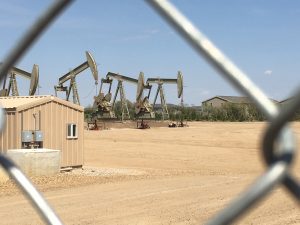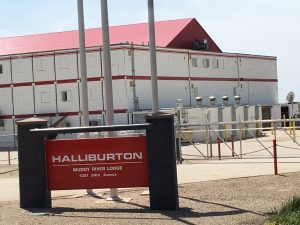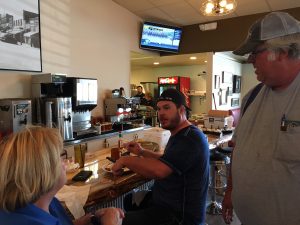When my friend Kathy suggested we add a side trip to Williston, North Dakota to our return trip from Arizona, I believe I said, “Are you kidding me?” Fortunately, I never said that out loud.
So there we were, 80 miles south of Canada and 15 miles east of Montana, in the far northwestern corner of North Dakota. We spent several hours driving around Williston and talking to several of its residents, at our hotel, at the restaurants and the shops where we stopped. And they all had one thing in common – they were all connected to the oil industry, and that’s what we came to see and learn about.

They shared another quality as well – friendly and willing to answer anything we asked to help us learn more about the area, the boom and now, the bust. Williston is the epicenter of the Bakken Formation, one of the largest contiguous deposits of oil and natural gas in the United States, which brought financial prosperity to North Dakota beginning about 2007, by the use of fracking. “Fracking made it possible to brake the shale apart and made it possible to drill horizontally to pull it out of the ground.” (http://www.ibtimes.com/hard-times-boomtown-usa-rise-fall-oil-williston-north-dakota)
“From 2010 to 2012, nearly 24,000 temporary oilfield workers joined the approximately 27,000 permanent residents in Williams Country, the seat of the region’s commercial oil industry. “(https://www.sciencedaily.com/releases/2016/05/). Clearly, housing, healthy recreational and social opportunities, schools, and local resources (including police) couldn’t meet the increased need.
I’ll admit, my interest in Williston piqued when I learned the FBI opened an office there in 2015 to respond to illegal activity that accompanied the oil boom. The locals – those who have made Williston their home for a long time, were quick to accuse the media of embellishing stories about the image of lawlessness in the area.
But women we met who came here with their boyfriends said they caution women not to go out alone – even a daytime jog around the neighborhood. Perhaps it’s the 100 men to 1 woman ratio we heard about (not verified, but certainly believable at the boom’s peak).

What doesn’t need verifying are the tremendous number of new apartment complexes that sit idle, the businesses that popped up and had to shut their doors almost as fast, the land up for auction. The man camps, primitive housing units that packed in workers, are now abandoned, hotels that were once filled every night, now sit at 33% capacity. Housing costs doubled in two years and seniors who could not keep with the increased rent had to leave the area, we were told.
The oil is still here, but because the US can purchase it for less from the Middle East than it can be produced for here, the pumps and wells sit still. To better understand the business, we chatted with Eddie and Gordy, two friendly local guys we met at lunch, who both make their living in the oil business. They helped us understand that in the Middle East, oil is very close to the surface of the earth and it takes little expense to extract it. Here, we have to drill at least 10,000 feet below the earth’s surface. And that’s the difference.

“I’d try to tell these young guys who moved here looking to make a quick buck to save as much as they can, but most of them just lived paycheck to paycheck,” Gordy told me, having experienced this cycle before. “They can’t call it a boom without a bust,” he continued.
Everyone we spoke with agreed on one thing – the bust has brought more stability to their hometown, even as it’s downsized, and most of the riff raff have moved on.
“Our roads and infrastructure have improved and we’ve gotten new schools out of the boom, so that’s a good thing,” said Eddie, and we heard that echoed elsewhere.
It was a good visit and I’m glad we took this side trip. The streets in “old” Williston are filled with small, well cared for, ranch style or bungalow homes. Many think the area will rebound.
“Will the people come back?” Kathy asked.
“I doubt it,” said Eddie. “Once people leave, most don’t come back to Williston for seconds.”



Leave a Reply